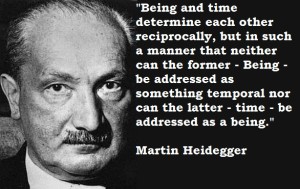References
Frempong, G., Ma, X., & Mensah, J. (2012). Access to postsecondary education: can schools compensate for socioeconomic disadvantage?. Higher Education, 63(1), 19-32.
Summary
The analysis of access to postsecondary education is essential to me as I embark on my journey with action research in education. I recently finished the article Access to postsecondary education: can schools compensate for socioeconomic disadvantage, which provided me with excellent insight on the relationship between socioeconomic status for high school students in Canada, and their access into higher education. The research was particularly concentrated on those who come from disadvantaged backgrounds. The author’s analysis was focused on research that continued to support a number of studies that have demonstrated that youth from disadvantaged socioeconomic backgrounds experience some level of exclusion in postsecondary education systems (Frempong, Ma, & Mensah, 2012).
As I read through this article, I found it very easy to compare it to several readings that I have recently completed, as well as active discussions that I find myself interacting with in my professional life. The discussion of access to higher education is a common theme of discussion amongst professionals in higher education, especially at the community college where I work. It is very typical for a topic of discussion to focus on underrepresented youth and access for minorities in college, in my work community. Hence I felt much of the subject matter in this reading was very easy to relate to. I also found the article very interesting in its approach to weigh heavily on its data model and analysis to support the findings of the researchers in this piece. The use of multilevel models to examine access to education was an approach that I had not often seen, so I found it quite interesting.
Organization
In looking at the organizational flow and consistency of this article, I found it had a well-developed argument supported by previous research and current data. The paper first introduced the reader to the challenges of access to higher education for high school students in Canada, while also citing similar challenges in the United States. The authors called on several authors and scholarly research that was completed prior to their research to guide the reader in understanding the problem that students face. I found this key in helping the authors frame the need for their research and to then be able highlight the difference in their research and findings, as opposed to other research on similar subject matter. The data analysis helped to drive the idea of the research and to formulate the research’s significant findings. The authors then finalized their piece by presenting their findings in a five step model to ensure the readers had a clear vision of the data as it related to the research conducted.
Contribution to the Field
Did I feel this journal reading was worthwhile and carried strength in its argument? Yes, I believe this article can be a resource for me moving forward in my own research. It contributed to my knowledge base by increasing my awareness in regards to the challenges of access in higher education outside of the U.S. I believe working domestically can sometimes narrow the concept of professionals and researchers in respect to the trials that face the academic world on a global level. The research presented in this article also supports the idea that socioeconomic status is prevalent in communities across the world, just as it is in my own community. The presentation of findings in this report were essential for me. The way they were presented was clear and concise, making it easy for readers to comprehend. I see that as an asset in identifying ways I can present my own research. I certainly see some of the research conducted with this study as a resource for me, as I move into my participatory action research experience.
Literature Review
As previously mentioned, the arrangement of findings and the presentation of the research were key pieces for me with this reading. I respected the way the authors presented their findings in five phases based off the strategic questions they wanted to answer. In my opinion, it helped frame the organization of their research to their audience. I also felt that the use of statistical analysis to show the limitation of access to postsecondary education based off of socioeconomic status and challenges was excellent. The reading did take on a more scientific feel because of this; however I was still captivated, by the way the authors related their data to the various student backgrounds and societal makings of the community in which they were conducting their research. In an example, the authors use the results from a Youth in Transition Survey as the basis for their research, but then did an excellent job at humanizing the findings by highlighting themes of student-teacher relationships and the vulnerability of student experiences based on school surroundings. The fore mentioned issues played key for me in this reading.
Theoretical Review
The theoretical framework of the study presented in this report was taken through its entirety. The authors showed their framework in the onset of the reading, to help the reader understand what was being questioned. The information connected to prior knowledge, experience, and research from the authors and outside scholars. The intent of the research, the data used, and findings were articulated clearly for the audience. The report gave information that was knowledgeable and appropriate for audiences who seek a better understanding of issues with access to higher education in their communities.
Data Collection and Analysis
The data collection and analysis in this article was one of the most in-depth presentations that I have encountered in a recent review of scholarly writings. The authors in this case were very thorough in the presentation and interpretation of their research for this article. As a reader, I engaged a very a well-defined picture of where the data for this analysis was coming from by way of a survey model. The measures were presented clearly including explanation of dependent variables for the surveys conducted. The use of tables to present data findings was an essential component for readers. Also, another valuable component was the written part on how multilevel analysis was chosen as the primary statistical technique in the current study, because the Programme for International Student Assessment and Youth in Transition Survey data used are multilevel in nature (Frempong, Ma, & Mensah, 2012). Although I have not encountered current readings with this in-depth presentation of data and analysis findings, it is my understanding that the methods used in this study are standard for inquiry in education.
Findings, Discussion, and Conclusion
Although the Canadian education system may encompass some of the same Eurocentric ideas that are established in the U.S., this article helped me to get a sense of similar challenges being faces in other countries. I found the reading significant as I try to narrow my own line of inquiry on access and excellence in education. I am looking to conduct research in the realm of high school to college transition and the community of people within this research were ideal to who I wish to work. I found this research to be grounded, while providing a variety of findings on the limitations of access to higher education for Canadian high school students, based off of their socioeconomic makeup. I had an easy connection to the problem being presented and to the findings that showed relationship between economically challenge schools, students, and families, in relation to their education attainment levels after high school. The research tools I found in this article are important to my educational research objective and I hope to use them as a valuable resource for the future.

